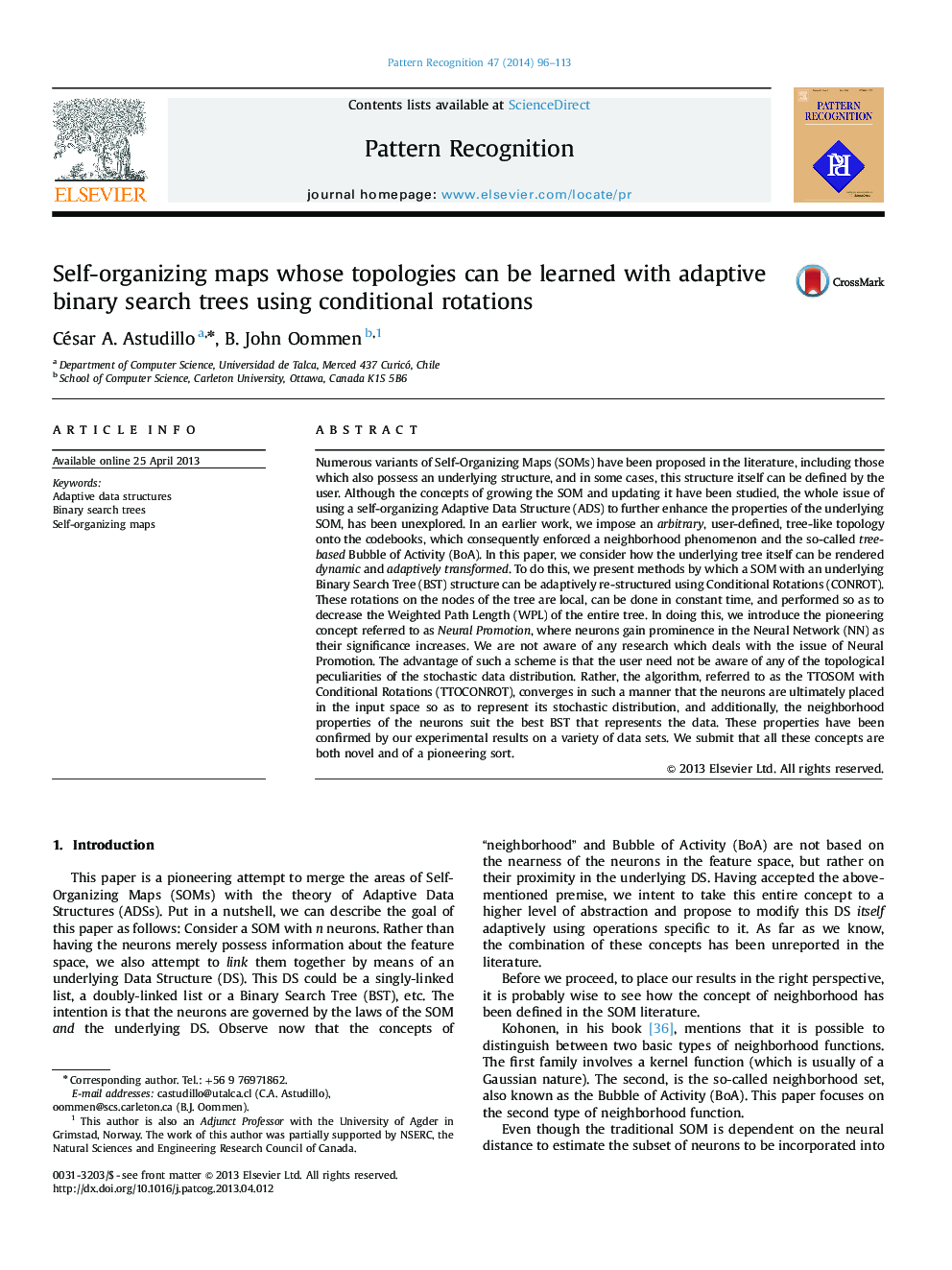| Article ID | Journal | Published Year | Pages | File Type |
|---|---|---|---|---|
| 532108 | Pattern Recognition | 2014 | 18 Pages |
•We merge the concepts of Adaptive Data Structures and Self-Organizing Maps.•This new scheme enhances the capabilities of a Tree-based SOM, i.e., the TTOSOM.•We attempt to preserve the topology and simultaneously find the Optimal Search Tree.•We adapt a tree using the SOM's update rule.•Simultaneously, we adapt a BST using rotations that are performed conditionally.
Numerous variants of Self-Organizing Maps (SOMs) have been proposed in the literature, including those which also possess an underlying structure, and in some cases, this structure itself can be defined by the user. Although the concepts of growing the SOM and updating it have been studied, the whole issue of using a self-organizing Adaptive Data Structure (ADS) to further enhance the properties of the underlying SOM, has been unexplored. In an earlier work, we impose an arbitrary, user-defined, tree-like topology onto the codebooks, which consequently enforced a neighborhood phenomenon and the so-called tree-based Bubble of Activity (BoA). In this paper, we consider how the underlying tree itself can be rendered dynamic and adaptively transformed. To do this, we present methods by which a SOM with an underlying Binary Search Tree (BST) structure can be adaptively re-structured using Conditional Rotations (CONROT). These rotations on the nodes of the tree are local, can be done in constant time, and performed so as to decrease the Weighted Path Length (WPL) of the entire tree. In doing this, we introduce the pioneering concept referred to as Neural Promotion, where neurons gain prominence in the Neural Network (NN) as their significance increases. We are not aware of any research which deals with the issue of Neural Promotion. The advantage of such a scheme is that the user need not be aware of any of the topological peculiarities of the stochastic data distribution. Rather, the algorithm, referred to as the TTOSOM with Conditional Rotations (TTOCONROT), converges in such a manner that the neurons are ultimately placed in the input space so as to represent its stochastic distribution, and additionally, the neighborhood properties of the neurons suit the best BST that represents the data. These properties have been confirmed by our experimental results on a variety of data sets. We submit that all these concepts are both novel and of a pioneering sort.
